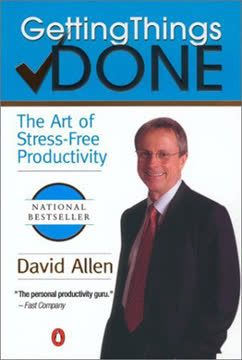Key Takeaways
1. Board's Core Responsibilities: Stewardship and Strategic Direction
"The board is ultimately accountable for getting the job done ethically, efficiently, and effectively."
Mission-driven governance. The board's primary role is to provide oversight and strategic guidance, always keeping the organization's mission at the forefront. This involves:
- Defining and periodically reviewing the organization's mission, vision, and values
- Setting strategic direction and long-term goals
- Monitoring organizational performance and program effectiveness
- Ensuring financial stability and resource allocation aligned with mission
Fiduciary duty. Board members have legal and ethical obligations to act in the best interests of the organization, including:
- Duty of care: Active participation and informed decision-making
- Duty of loyalty: Putting the organization's needs before personal interests
- Duty of obedience: Ensuring compliance with laws and adherence to the mission
2. Effective Board Structure: Size, Composition, and Committees
"The best structure for your board is the one that facilitates its work flow."
Optimal board size. There's no one-size-fits-all approach, but consider:
- Smaller boards (7-15 members): Easier to schedule meetings, foster engagement
- Larger boards (15-30+ members): Greater diversity of perspectives, shared workload
- Legal requirements: Check state laws for minimum board size
Board composition. Aim for diversity in skills, experiences, and backgrounds:
- Use a board matrix to identify gaps and recruitment needs
- Consider term limits to ensure fresh perspectives
- Strive for diversity in age, gender, ethnicity, and professional expertise
Committee structure. Streamline board work through effective use of committees:
- Standing committees: Finance, Governance, Audit
- Ad hoc committees or task forces for specific projects
- Executive committee (if needed) with clearly defined authority
3. Board Member Selection and Development: Recruiting and Engaging Leaders
"The seriousness with which a board member is recruited and selected is directly proportional to the seriousness with which that board member fulfills his or her role."
Strategic recruitment. Identify and attract board members who will contribute meaningfully:
- Develop clear job descriptions and expectations for board service
- Leverage personal networks and community connections
- Consider creating a board alumni council to keep former members engaged
Orientation and onboarding. Set new board members up for success:
- Provide comprehensive orientation on the organization's history, programs, and financials
- Assign mentors to help new members acclimate
- Offer ongoing education opportunities on governance best practices
Board member engagement. Keep board members active and committed:
- Conduct regular board self-assessments
- Provide opportunities for leadership within committees
- Recognize and celebrate board member contributions
4. Board Meetings: Maximizing Productivity and Engagement
"Well-prepared participation is essential."
Meeting preparation. Ensure productive discussions by:
- Distributing agendas and materials well in advance
- Using consent agendas for routine items
- Encouraging board members to come prepared with questions and insights
Effective facilitation. The board chair plays a crucial role in:
- Managing time and keeping discussions on track
- Encouraging participation from all members
- Summarizing key decisions and action items
Strategic focus. Prioritize high-level discussions:
- Dedicate significant time to strategic issues and long-term planning
- Limit operational updates and reports
- Use dashboards or other visual tools to quickly convey key information
5. Financial Oversight: Ensuring Fiscal Health and Accountability
"Every board member must take finances seriously."
Financial literacy. Ensure all board members understand:
- Basic financial statements (balance sheet, income statement, cash flow)
- Key financial ratios and benchmarks for the sector
- The organization's revenue model and major funding sources
Budget oversight. The board's role includes:
- Reviewing and approving the annual budget
- Monitoring financial performance throughout the year
- Ensuring adequate reserves and investment policies
Audit and internal controls. Maintain financial integrity through:
- Regular external audits
- Strong internal control policies
- Clear conflict of interest policies and annual disclosures
6. Fundraising and Revenue Generation: Expanding Financial Resources
"By serving on the board, you publicly show your support of the organization's mission, vision, and values."
Culture of giving. Foster a board-wide commitment to fundraising:
- Expect 100% board giving at a meaningful level for each member
- Provide training on fundraising skills and donor cultivation
- Celebrate fundraising successes and share impact stories
Diverse revenue streams. Explore multiple funding sources:
- Individual donations and major gifts
- Grants and foundations
- Earned income opportunities
- Corporate partnerships and sponsorships
Fundraising roles. Engage board members in various aspects:
- Making personal introductions to potential donors
- Hosting cultivation events
- Writing thank-you notes to supporters
- Sharing the organization's story in the community
7. Board-Staff Relations: Cultivating a Productive Partnership
"The board chair and the chief executive should sit next to one another during business sessions, working as a team."
Clear roles and responsibilities. Delineate board and staff functions:
- Board: Governance, policy-setting, strategic direction
- Staff: Day-to-day operations, program implementation
Chief executive partnership. Foster a strong working relationship:
- Regular communication between board chair and chief executive
- Annual performance evaluation of the chief executive
- Clear delegation of authority for operational decisions
Staff engagement. Balance appropriate boundaries with meaningful interaction:
- Invite key staff to present at board meetings when relevant
- Avoid micromanagement of staff responsibilities
- Celebrate staff accomplishments and express appreciation
8. Organizational Change: Adapting to New Challenges and Opportunities
"Change is always around the corner."
Lifecycle awareness. Recognize different organizational stages:
- Start-up: High energy, limited structure
- Growth: Expanding programs and formalizing processes
- Maturity: Stable operations, focus on sustainability
- Decline or Renewal: Need for reinvention or revitalization
Strategic planning. Guide the organization's future direction:
- Conduct regular environmental scans
- Engage stakeholders in the planning process
- Set measurable goals and monitor progress
Collaboration and partnerships. Explore opportunities for greater impact:
- Strategic alliances with complementary organizations
- Potential mergers or acquisitions when aligned with mission
- Expansion into new geographic areas or program areas
9. Crisis Management: Preparing for and Responding to Emergencies
"The best time to address crisis management is when all is calm, when board members can focus objectively on ideal practices."
Proactive planning. Develop a crisis management plan:
- Identify potential risks and vulnerabilities
- Establish clear lines of communication and decision-making authority
- Create response protocols for different types of crises
Effective communication. During a crisis:
- Designate a primary spokesperson
- Provide timely and transparent updates to stakeholders
- Monitor and respond to media coverage as appropriate
Post-crisis evaluation. Learn from the experience:
- Conduct a thorough review of the organization's response
- Implement necessary changes to prevent future occurrences
- Update crisis management plans based on lessons learned
10. Legal and Ethical Considerations: Maintaining Integrity and Compliance
"Nonprofit organizations are often categorized by the phase in their lifecycle."
Legal compliance. Stay informed of relevant laws and regulations:
- Tax-exempt status requirements
- Employment laws and best practices
- State and federal reporting obligations
Ethical standards. Uphold the highest level of integrity:
- Develop and enforce a code of ethics
- Implement strong conflict of interest policies
- Promote a culture of transparency and accountability
Risk management. Protect the organization's assets and reputation:
- Maintain appropriate insurance coverage
- Implement cyber security measures
- Regularly review and update governance policies
Last updated:
Review Summary
The Nonprofit Board Answer Book receives high praise for its comprehensive coverage of nonprofit governance topics. Readers appreciate its question-and-answer format, making it easy to find specific information. The book is lauded for its thorough exploration of board functions, structure, recruitment, meetings, fiduciary responsibilities, and board-staff relations. Many reviewers consider it an invaluable resource for both new and experienced board members, as well as nonprofit executives. Its practical insights and actionable steps make it a go-to guide for effective nonprofit leadership and governance.
Similar Books










Download PDF
Download EPUB
.epub digital book format is ideal for reading ebooks on phones, tablets, and e-readers.




